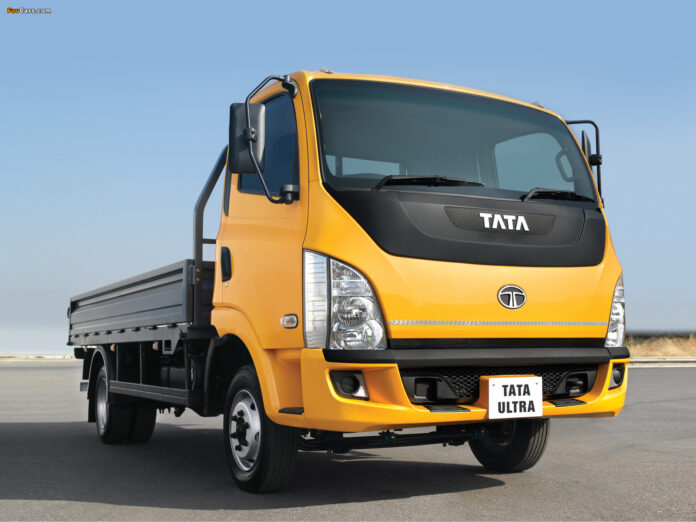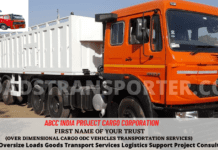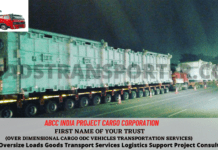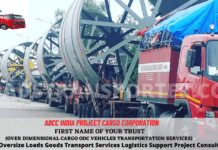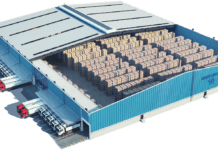The Tata Ultra truck range was first launched in 2013, with the aim of modernizing Tata Motors’ commercial vehicle lineup and offering customers a more efficient and comfortable trucking experience.
Here are some of the key reasons behind the invention of the Tata Ultra trucks:
- Need for Modernization: Tata Motors recognized the need to update its commercial vehicle offerings with modern technologies and features to meet the evolving needs of customers. The Ultra range was designed to be a significant step up from its predecessors in terms of performance, efficiency, and driver comfort.
- Increased Competition: The Indian commercial vehicle market was becoming increasingly competitive with the entry of international brands. Tata Motors needed a strong product to compete effectively and retain its market share.
- Customer Demand: There was a growing demand from customers for trucks that offered better fuel efficiency, higher payload capacity, and improved driver comfort. The Ultra range was designed to address these demands and provide a better overall value proposition.
- Versatility: The Ultra platform was designed to be versatile and adaptable to various applications. It can be configured for different body types and applications, catering to a wide range of customer needs.
The Tata Ultra trucks have been successful in the market and have helped Tata Motors to strengthen its position in the commercial vehicle segment. They offer a combination of performance, efficiency, comfort, and versatility, making them a popular choice for businesses of all sizes.
Evolution
The Tata Ultra truck range has undergone significant evolution since its initial launch in 2013. Here’s a look at some key aspects of its evolution:
1. Expanding the Range:
Initial Launch (2013): Tata Motors started with a few models focusing on the medium-duty segment (7-16 tonnes).
Expanding Applications: Over time, Tata Motors expanded the Ultra range to cater to a wider variety of applications, including:
Light commercial vehicles (LCV): Ultra T.6, T.7
Medium commercial vehicles (MCV): Ultra T.11, T.12, T.14, T.16
Heavy commercial vehicles (HCV): Ultra T.18, T.19
Specialized applications: Tippers, tankers, refrigerated trucks, etc.
2. Technological Advancements:
BS6 Emission Norms: The Ultra range has been upgraded to meet the stringent BS6 emission norms in India, incorporating advanced engine technologies and after-treatment systems.
New Engine Options: Introduction of new and more efficient engines, such as the 5L Turbotronn engine, offering better performance and fuel efficiency.
Improved Gearboxes: Adoption of new gearbox technologies like the G-750 gearbox with features like twin synchromesh design and gear shift advisor for smoother gear changes and better fuel economy.
Enhanced Safety Features: Incorporation of advanced safety features like ABS, EBD, driver airbags, and improved cabin safety.
3. Focus on Driver Comfort:
Ergonomic Cabins: The Ultra trucks feature modern and ergonomically designed cabins with features like walkthrough cabins, tilt and telescopic steering, and comfortable seats for a better driving experience.
Improved Features: Addition of features like air conditioning, music systems, and telematics for enhanced driver comfort and convenience.
4. Electric Mobility:
Ultra T.7 Electric: Tata Motors has introduced an electric version of the Ultra T.7 truck, showcasing its commitment to sustainable transportation solutions. This electric truck offers zero-emission operation and is suitable for various urban applications.
5. Continuous Improvement:
Customer Feedback: Tata Motors actively incorporates customer feedback to continuously improve the Ultra range, enhancing its features, performance, and reliability.
Staying Competitive: The company keeps updating the Ultra trucks to stay competitive in the evolving commercial vehicle market.
The Tata Ultra range has evolved into a comprehensive and modern trucking platform, offering a wide range of options to meet the diverse needs of businesses in India and other markets. Its focus on technology, efficiency, driver comfort, and sustainability makes it a strong contender in the commercial vehicle segment.
Tata ULTRA Goods Carrier and Tata ULTRA Passenger Transport Vehicles:
| Feature | Tata ULTRA Goods Carrier | Tata ULTRA Passenger Transport |
|---|---|---|
| Purpose | Transportation of goods and cargo | Passenger transportation (buses and vans) |
| Popular Models | Ultra T.7, Ultra T.16, Ultra T.18 SL, Ultra Sleek T-Series | Ultra Starbus, Ultra Cityride, Ultra Electric Buses |
| Payload Capacity | Varies from 3 to 18 tonnes | Passenger capacity from 22 to 65+ seats |
| Engine Options | BS6-compliant diesel engines with 140-200 HP | BS6 diesel & electric options with fuel-efficient technology |
| Chassis & Build | Reinforced chassis with various deck lengths | Monocoque and ladder-frame chassis for passenger comfort |
| Fuel Efficiency | Optimized for cargo transportation | Designed for fuel efficiency with lightweight body construction |
| Safety Features | ABS, hill start assist, crash-tested cabin | Anti-roll bars, seat belts, fire extinguishers, emergency exits |
| Cabin Design | Ergonomic design with driver comfort focus | Passenger-friendly with spacious interiors and air suspension |
| Market Usage | Logistics, FMCG, e-commerce, agriculture, infrastructure | Public transport, staff and school buses, intercity travel |
| Technology | Fleet Edge telematics, low maintenance costs | Telematics, eco-friendly electric versions available |
| Comfort Features | Air-conditioned cabins, digital instrument clusters | Air suspension, push-back seats, entertainment systems |
Tata ULTRA Market – Local (India) vs. Global based on recent market trends:
| Feature | Local Market (India) | Global Market (Exports) |
|---|---|---|
| Market Demand | High demand in logistics, e-commerce, FMCG, and construction | Lower demand due to economic challenges, competition |
| Sales Performance (Oct 2024) | 32,708 units (1% growth from 2023) | 1,551 units (-15% decline) (Tata Motors Reports 34,259 Commercial Vehicle Sales for October 2024) |
| Segment Growth | 9% growth in ILCV category, driven by infrastructure | Struggles due to import restrictions and global conditions |
| Key Models | Ultra T.7, T.9, T.11, T.16 | Ultra Export variants, specialized LHD models |
| Technology Adoption | High demand for BS6 & CNG models, telematics fleet management | Growing interest in electric & CNG commercial vehicles |
| Competition | Competing with Ashok Leyland, Mahindra, Eicher in LCV/ICV | Competes with global players like Mercedes-Benz, Volvo, Isuzu |
| Future Outlook | Expansion in domestic EV, LCV, and smart city buses | Need for better penetration in emerging markets (Africa, Middle East) |
Models
| Model | Dimensions (LxWxH) (approx.) | Weight Capacity (approx.) | On-Road Price (approx.) | Mileage (approx.) | Annual Maintenance Cost (approx.) | Resale Market |
|---|---|---|---|---|---|---|
| Ultra T.6 | 6.5 m x 2.2 m x 2.5 m | 3.5 – 4 tonnes | ₹15 – 17 lakh | 10 kmpl | ₹30,000 – 40,000 | Good demand due to versatility and fuel efficiency |
| Ultra T.7 | 7 m x 2.2 m x 2.5 m | 4 – 4.5 tonnes | ₹17 – 19 lakh | 9 kmpl | ₹40,000 – 50,000 | Good demand, especially for e-commerce and last-mile delivery |
| Ultra T.9 | 7.5 m x 2.2 m x 2.5 m | 5 – 6 tonnes | ₹19 – 21 lakh | 8 kmpl | ₹50,000 – 60,000 | Decent demand for applications like FMCG and white goods transportation |
| Ultra T.11 | 8 m x 2.2 m x 2.6 m | 7 – 8 tonnes | ₹21 – 23 lakh | 7 kmpl | ₹60,000 – 70,000 | Fairly good demand, but competition is higher in this segment |
| Ultra T.12 | 8.5 m x 2.2 m x 2.6 m | 7.5 – 8.5 tonnes | ₹23 – 25 lakh | 6.5 kmpl | ₹70,000 – 80,000 | Decent demand, particularly for regional cargo movement |
| Ultra T.14 | 9 m x 2.3 m x 2.7 m | 9 – 10 tonnes | ₹25 – 27 lakh | 6 kmpl | ₹80,000 – 90,000 | Moderate demand, as heavier trucks are preferred for long-haul applications |
| Ultra T.16 | 9.5 m x 2.3 m x 2.7 m | 10 – 11 tonnes | ₹27 – 29 lakh | 5.5 kmpl | ₹90,000 – 1,00,000 | Moderate demand; can be affected by fuel prices and competition |
| Ultra T.18 | 10 m x 2.4 m x 2.8 m | 12 – 13 tonnes | ₹30 – 32 lakh | 5 kmpl | ₹1,00,000 – 1,20,000 | Lower demand compared to lighter models; resale value depends on condition and usage |
| Ultra T.19 | 10.5 m x 2.4 m x 2.8 m | 13 – 14 tonnes | ₹32 – 34 lakh | 4.5 kmpl | ₹1,20,000 – 1,40,000 | Limited demand; resale value can be affected by newer models and technologies |
The Tata Ultra range offers several advantages that make it a compelling choice in the commercial vehicle segment:
1. Modern and Versatile Platform:
- Wide Range of Models: The Ultra platform caters to a wide range of applications with models ranging from light commercial vehicles (LCVs) to medium and heavy commercial vehicles (MCVs and HCVs). This versatility allows businesses to find the right truck for their specific needs.
- Customizable Configurations: Tata Motors offers a high degree of customization, allowing customers to configure the Ultra trucks with different body types, payload capacities, and features to suit their specific requirements.
2. Performance and Efficiency:
- Powerful Engines: The Ultra trucks are equipped with powerful and fuel-efficient engines, such as the 5L Turbotronn engine, delivering strong performance and better mileage.
- Advanced Gearboxes: The use of advanced gearboxes like the G-750 with features like twin synchromesh and gear shift advisor ensures smoother gear changes and optimized fuel efficiency.
- Aerodynamic Design: The Ultra trucks feature modern and aerodynamic cabin designs, which help reduce drag and improve fuel economy.
3. Driver Comfort and Safety:
- Ergonomic Cabins: The Ultra range boasts ergonomically designed cabins with features like walkthrough cabins, tilt and telescopic steering, and comfortable seats for a better driving experience.
- Enhanced Comfort Features: Features like air conditioning, music systems, and telematics contribute to a more comfortable and convenient driving experience.
- Safety Features: The Ultra trucks are equipped with safety features like ABS, EBD, driver airbags, and reinforced cabin structures to enhance driver and passenger safety.
4. Technology and Connectivity:
- Telematics: Tata Motors offers telematics solutions that provide valuable data on vehicle performance, fuel consumption, and location, helping businesses optimize fleet management and improve efficiency.
- Connectivity Features: Features like USB charging ports and mobile connectivity options enhance driver convenience and productivity.
5. Strong After-Sales Support:
- Extensive Network: Tata Motors has a vast service and support network across India, ensuring easy access to maintenance and repairs.
- Warranty and Service Packages: The company offers comprehensive warranty and service packages to provide peace of mind to customers.
6. Value for Money:
- Competitive Pricing: The Ultra trucks are competitively priced in their respective segments, offering a good value proposition for businesses.
- Fuel Efficiency: The focus on fuel efficiency helps reduce operating costs and improve the overall profitability for businesses.
7. Focus on Sustainability:
- Electric Mobility: The introduction of the Ultra T.7 Electric demonstrates Tata Motors’ commitment to sustainable transportation solutions.
- BS6 Compliance: The Ultra range complies with the stringent BS6 emission norms, contributing to a cleaner environment.
These advantages make the Tata Ultra range a strong contender in the commercial vehicle market, offering a combination of performance, efficiency, comfort, safety, and value for businesses of all sizes.
While the Tata Ultra range has many strengths, it also has some disadvantages that potential buyers should consider:
1. Higher Initial Cost:
Compared to some of its competitors in the Indian market, the Tata Ultra trucks can have a higher initial purchase price. This could be a barrier for smaller businesses or those with budget constraints.
2. Limited Global Presence:
While Tata Motors is expanding the Ultra’s presence globally, it still has limited reach compared to established global brands. This could mean a smaller service network and potentially longer lead times for parts in some regions.
3. Resale Value of Heavier Models:
The resale value of the heavier Ultra models (T.18 and T.19) can be lower compared to lighter models due to factors like lower demand, newer model introductions, and potentially higher operating costs.
4. Competition in Specific Segments:
In certain segments, the Ultra trucks face strong competition from established players with extensive experience and brand recognition. This could make it challenging to gain market share in those segments.
5. Availability of Spare Parts:
While Tata Motors has a wide service network, the availability of spare parts for newer or specialized Ultra models could be a concern in some regions, potentially leading to longer downtime during repairs.
6. Fuel Efficiency Variations:
While the Ultra trucks are designed for fuel efficiency, the actual mileage can vary significantly depending on factors like driving conditions, load, and maintenance.
7. After-Sales Service Experience:
While Tata Motors has a large service network, the quality of after-sales service can vary across dealerships and locations. Some customers have reported inconsistent service experiences.
Overall:
The Tata Ultra range offers a compelling package with its modern design, versatility, and focus on driver comfort. However, potential buyers should weigh these disadvantages against the advantages to make an informed decision based on their specific needs and priorities. It’s crucial to compare the Ultra trucks with competitors in the relevant segment and consider factors like budget, application requirements, and long-term ownership costs before making a purchase.
Here’s a chart highlighting the best features of Tata ULTRA trucks:
| Feature Category | Best Features | Benefits |
|---|---|---|
| Performance | High-powered BS6 engines (100-200 HP) | Better torque and fuel efficiency |
| Fuel Efficiency | Optimized Mileage (5-10 KMPL) | Reduces operating costs |
| Cabin Comfort | Walk-through cabin, ergonomic seats | Less driver fatigue on long trips |
| Technology | Fleet Edge Telematics | Real-time vehicle tracking |
| Safety | Crash-tested cabin, air brakes, seat belts | Improved driver and cargo safety |
| Suspension | Parabolic leaf springs with shock absorbers | Smoother ride, even on rough roads |
| Cargo Options | Multiple deck lengths & GVW (4-18 tons) | Suitable for various industries |
| Eco-Friendly Models | Electric & CNG variants available | Lower emissions, cost savings |
| Low Maintenance | Durable driveline & longer service intervals | Reduces breakdowns and downtime |
| Resale Value | High demand in the used truck market | Better ROI for fleet owners |
Tata ULTRA trucks stand out due to high performance, durability, advanced technology, and safety, making them a top choice for logistics, construction, and urban transport .
Comparing the utility of Tata ULTRA trucks for single owners vs big logistics companies and transporters:

| Feature | Single Owner/Operator | Large Logistic Companies/Transporters |
|---|---|---|
| Model Preference | Likely to prefer lighter models (T.6, T.7, T.9) for better maneuverability and fuel efficiency in local/regional operations | May opt for a wider range of models, including heavier ones (T.16, T.18, T.19) for long-haul transport and higher payloads |
| Customization | May opt for basic configurations or customized bodies for specific goods like fruits, vegetables, or construction materials | Often require specialized bodies like tankers, refrigerated containers, or closed cargo bays for diverse cargo needs |
| Utilization | May have lower daily utilization depending on business needs and individual routes | Aim for high utilization with optimized routes and schedules to maximize return on investment |
| Maintenance | May handle maintenance and repairs independently or rely on local workshops | Likely to have dedicated maintenance teams or tie-ups with authorized service centers for regular upkeep and repairs |
| Financing | May rely on personal savings or loans from local financiers | Often have access to diverse financing options, including fleet financing and leasing arrangements |
| Technology Adoption | May gradually adopt telematics and fleet management solutions | More likely to invest in advanced telematics and technology for real-time tracking, route optimization, and performance monitoring |
| Focus | Prioritize affordability, fuel efficiency, and ease of maintenance | Prioritize payload capacity, reliability, driver comfort, and overall operating costs |
Key Differences:
- Scale of Operations: Single owners typically operate on a smaller scale with limited resources, while large companies have greater resources and focus on maximizing efficiency and profitability.1
- Application Needs: Single owners often cater to local or regional transportation needs, while large companies handle diverse cargo and long-haul transportation.
- Financial Capacity: Large companies have greater financial capacity for investments in technology, maintenance, and a wider range of models.
Overall:
The Tata Ultra range offers suitable options for both single owner-operators and large logistic companies. The choice of specific models and configurations depends on individual needs, priorities, and the scale of operations.
Tata ULTRA accident ratios and safety features:

| Safety Feature | Description | How it Helps Reduce Accidents |
|---|---|---|
| Stronger Cabin Structure | Reinforced cabin with high-strength steel | Protects occupants in a collision by absorbing impact energy |
| ABS (Anti-lock Braking System) | Prevents wheel lockup during braking | Helps maintain steering control during emergency braking |
| EBD (Electronic Brakeforce Distribution) | Distributes braking force optimally between axles | Improves stability and control under heavy braking |
| Air Brakes | More efficient braking system | Offers better braking performance, especially for heavier models |
| Parking Brakes | Provides a secondary braking system for parking and emergencies | |
| Driver Airbags | Reduces driver injury in a frontal collision | |
| Seatbelts | Restrains occupants during a crash to minimize injury | |
| Fog Lamps | Improves visibility in foggy conditions | Helps prevent accidents in low-visibility situations |
| Reverse Parking Sensors | Aids in maneuvering and parking in tight spaces, reducing the risk of collisions | |
| Telematics (Optional) | Tracks vehicle location and performance data | Can be used to alert authorities in case of an accident or breakdown; data can be analyzed to identify risky driving behaviors and improve safety |
| Hill Start Assist (Optional) | Prevents rollback on inclines | Helps with safe starts on uphill slopes, reducing the risk of accidents |
| Lane Departure Warning System (Optional) | Alerts driver if the vehicle drifts from its lane | Helps prevent accidents due to driver fatigue or distraction |
| Driver Monitoring System (Optional) | Monitors driver alertness | Can alert the driver if signs of drowsiness or distraction are detected, helping prevent accidents |
Tata ULTRA resale market in India (Local) and Global:
here’s a general overview of the Tata ULTRA resale market in India and globally:
| Factor | India (Local) | Global |
|---|---|---|
| Market Size | Larger and more established market for used commercial vehicles | Smaller and less developed compared to India |
| Demand | High demand for used LCVs and ICVs due to affordability and versatility | Demand varies by region and specific model; generally lower than in India |
| Depreciation | Depreciation rates can be moderate, especially for well-maintained trucks in popular segments | Depreciation may be higher due to factors like lower demand and import/export regulations |
| Factors Affecting Resale Value | Condition, mileage, usage history, maintenance records, model popularity, and market demand | Similar factors as in India, plus import/export regulations, local market conditions, and brand perception |
| Popular Models | Lighter models like Ultra T.6, T.7, and T.9 tend to have better resale value due to higher demand and fuel efficiency | Resale value varies by region and model; generally, well-maintained trucks with lower mileage and versatile configurations are preferred |
| Sales Channels | Used truck dealerships, online platforms, direct sales between individuals, and auctions | Similar channels as in India, plus specialized used commercial vehicle importers and exporters |
| Challenges | Lack of standardized pricing, potential for odometer tampering, and difficulty in verifying vehicle history | Similar challenges as in India, plus complexities related to import/export regulations and varying market conditions |
Key Differences:
- Market Maturity: The used commercial vehicle market in India is more mature and organized compared to many global markets.
- Demand Dynamics: Demand for used Tata ULTRA trucks is generally higher in India due to the brand’s strong presence and the affordability factor.
- Regulatory Environment: Import/export regulations and local market conditions can significantly impact the resale market for Tata ULTRA trucks in different countries.
Overall:
The resale market for Tata ULTRA trucks in India is generally strong, especially for lighter and well-maintained models. Globally, the resale value can vary significantly based on local market conditions and demand. It’s essential to research the specific market and consider factors like truck condition, mileage, and maintenance records before buying or selling a used Tata ULTRA truck.
Here are some interesting facts about the Tata ULTRA range:

- Innovation in Commercial Vehicles: The Tata ULTRA series is one of the most advanced offerings in the commercial vehicle segment by Tata Motors. It was specifically designed to meet the increasing demand for efficient, versatile, and reliable vehicles for both goods and passenger transport
- Fuel Efficiency: The Tata ULTRA trucks are known for their fuel-efficient engines, which provide significant cost savings for fleet owners and small business operators. This has made them popular in both local and international markets, especially in sectors like logistics and distribution
- Global Presence: While it is most popular in India, the Tata ULTRA range has also found a place in markets like the Middle East, Africa, and Southeast Asia. This international success has been facilitated by Tata Motors’ extensive global footprint
- Customization and Flexibility: The Tata ULTRA offers a wide range of customization options for various industries, from construction to e-commerce logistics, allowing businesses to tailor the vehicle’s size, load capacity, and features according to specific needs
- Environmentally Friendly: The Tata ULTRA also meets Euro-IV and Euro-VI emission norms, which is an important feature in markets that are becoming increasingly focused on environmental sustainability
- Advanced Safety Features: The vehicle comes equipped with the latest safety features, including ABS (Anti-lock Braking System), airbags, and a strong crash-tested cabin, ensuring safety for both the driver and passengers
These factors contribute to the Tata ULTRA’s reputation as a highly reliable and versatile commercial vehicle across diverse markets.
Summarizing the contribution of Tata ULTRA to Tata Motors’ growth:
| Aspect | Impact on Tata Motors Growth |
|---|---|
| Revenue Growth | Tata Motors’ revenue increased 26.6% in FY 2023-24, driven by commercial vehicle sales, including the ULTRA series |
| Market Expansion | ULTRA trucks have helped Tata Motors expand in India, Africa, the Middle East, and Southeast Asia, strengthening global market presence |
| Technology & Innovation | Features such as fuel-efficient engines, smart fleet management, and advanced ergonomics make Tata ULTRA a preferred choice for businesses |
| Sustainability Efforts | Supports Tata Motors’ green mobility initiative, offering BS-VI compliant and electric variants to reduce emissions |
| Competitive Advantage | Competes with Ashok Leyland, Eicher, and Volvo by offering low maintenance, enhanced safety, and superior driver comfort |
| Fleet Adoption Growth | Tata ULTRA is widely used in e-commerce, logistics, and last-mile delivery, boosting sales in these high-demand industries |
The Tata Ultra range has significantly contributed to Tata Motors’ growth in the commercial vehicle segment.1 Here are some key ways in which the Ultra trucks have helped Tata Motors:
1. Modernizing the Product Portfolio:
The Ultra platform, launched in 2013, represented a significant step up from Tata Motors’ previous commercial vehicle offerings. Its modern design, advanced technology, and focus on driver comfort helped Tata Motors refresh its image and appeal to a wider range of customers.
2. Expanding Market Reach:
The versatility of the Ultra platform, with models catering to various applications from light to heavy commercial vehicles, allowed Tata Motors to expand its market reach and cater to diverse customer needs. This led to increased sales and market share in different segments.
3. Strengthening Competitive Position:
The Ultra trucks helped Tata Motors compete more effectively against domestic and international rivals in the Indian commercial vehicle market. The Ultra’s combination of performance, efficiency, and features made it a strong contender and helped Tata Motors maintain its market leadership.
4. Improving Profitability:
The Ultra range’s focus on fuel efficiency and lower operating costs contributed to improved profitability for both Tata Motors and its customers. The trucks’ versatility also allowed for better utilization and higher revenue potential for businesses.
5. Enhancing Brand Image:
The Ultra trucks, with their modern design and advanced features, enhanced Tata Motors’ brand image as an innovative and customer-centric commercial vehicle manufacturer. This helped attract new customers and strengthen the company’s reputation in the market.
6. Driving Technology Adoption:
The Ultra platform served as a testbed for Tata Motors to introduce new technologies like telematics, advanced safety features, and electric mobility solutions in the commercial vehicle segment. This helped drive technology adoption and position Tata Motors as a leader in innovation.
7. Supporting Growth in New Markets:
The Ultra range is playing a key role in Tata Motors’ expansion into new global markets. The trucks are now available in several countries and are helping Tata Motors gain a foothold in international commercial vehicle markets.5
8. Contributing to Sustainability Goals:
The introduction of the Ultra T.7 Electric aligns with Tata Motors’ sustainability goals and showcases its commitment to developing environmentally friendly transportation solutions.
Overall:
The Tata Ultra range has been a significant growth driver for Tata Motors in the commercial vehicle segment. Its modern design, versatility, focus on driver comfort, and adoption of new technologies have helped Tata Motors expand its market reach, strengthen its competitive position, and enhance its brand image.6 The Ultra platform continues to contribute to Tata Motors’ growth and its vision for the future of commercial vehicles.
For Investing
Investing in a Tata ULTRA truck can be a profitable venture for a common person, particularly in logistics, goods transport, and last-mile delivery businesses. Here’s a detailed chart comparing different investment opportunities and potential earnings:
| Investment Option | Company/Industry | Monthly Earnings (Approx.) | Annual Earnings (Approx.) |
|---|---|---|---|
| Fleet Aggregator (e.g., Porter, Rivigo) | Last-Mile & Intercity Transport | ₹70,000 – ₹1,20,000 | ₹8.4L – ₹14.4L |
| Logistics Contracts (e.g., Delhivery, Blue Dart) | E-commerce & Parcel Transport | ₹80,000 – ₹1,50,000 | ₹9.6L – ₹18L |
| Construction Material Transport | Cement, Sand, Bricks Supply | ₹1,00,000 – ₹1,80,000 | ₹12L – ₹21.6L |
| Refrigerated Transport (e.g., Cold Chain) | Perishable Goods | ₹1,20,000 – ₹2,00,000 | ₹14.4L – ₹24L |
| Own Transport Business | Independent Logistics | ₹1,50,000 – ₹2,50,000 | ₹18L – ₹30L |
Key Takeaways:
- Higher Profits: Investing in Tata ULTRA for logistics and transport provides steady income, with options to scale.
- Better ROI: Higher mileage and lower maintenance costs improve profitability.
- Market Demand: Growing e-commerce and industrial transport sectors increase earning potential.
This estimation is based on typical Tata ULTRA truck usage in logistics and transport businesses .
Summary and Conclusion TATA ULTRA
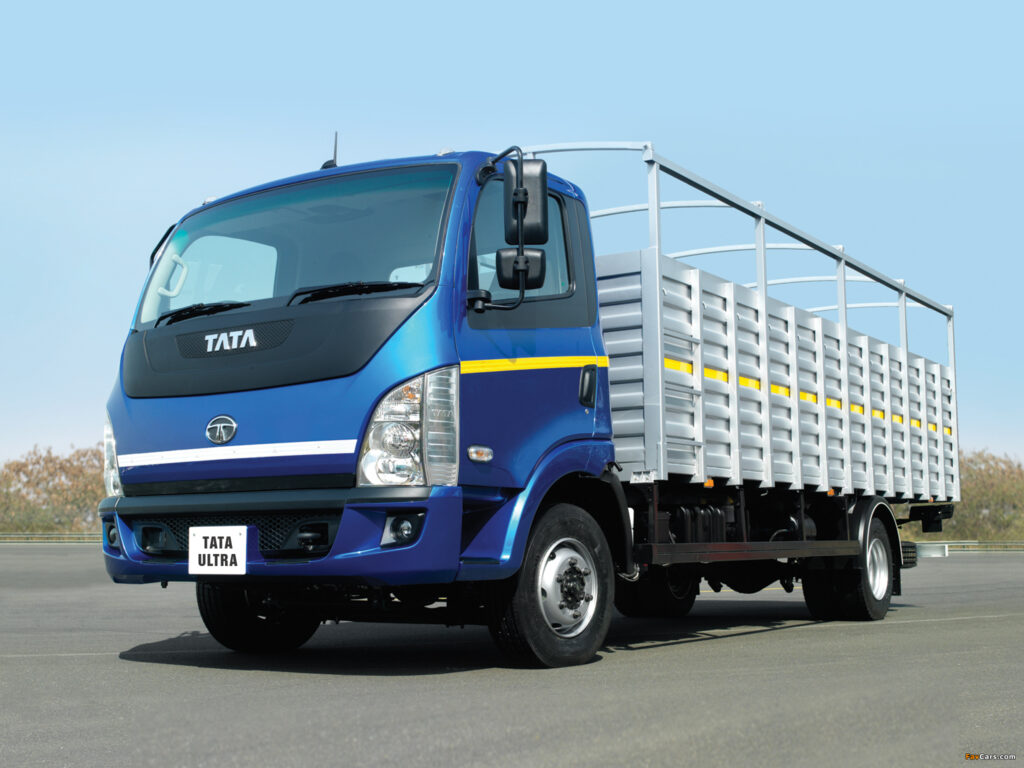
The Tata Ultra range has significantly impacted the commercial vehicle landscape since its introduction in 2013. Here’s a summary and conclusion of key aspects:
Summary:
- Modern and Versatile: The Ultra trucks feature modern designs, advanced technologies, and a wide range of models to cater to diverse applications, from light-duty urban deliveries to heavy-duty long-haul transport.
- Performance and Efficiency: The Ultra trucks offer a balance of performance and fuel efficiency, thanks to powerful engines, aerodynamic designs, and advanced gearboxes.
- Driver Comfort and Safety: Tata Motors has prioritized driver comfort with ergonomic cabins, comfortable seating, and features like air conditioning and telematics. Safety is enhanced with features like ABS, EBD, airbags, and optional driver assistance systems.
- Technology and Connectivity: The Ultra range incorporates telematics and connectivity features to improve fleet management, efficiency, and driver convenience.
- Strong After-Sales Support: Tata Motors’ extensive service network and warranty packages provide support to Ultra owners.
- Value for Money: The Ultra trucks offer a competitive value proposition with their combination of features, performance, and pricing.
- Global Presence: While initially focused on the Indian market, Tata Motors is expanding the Ultra range’s presence in international markets.
- Sustainability: The introduction of the Ultra T.7 Electric highlights Tata Motors’ commitment to sustainable transportation solutions.
Conclusion:
The Tata Ultra range has been a success for Tata Motors, contributing to the company’s growth, market leadership, and brand image. The Ultra trucks have modernized the commercial vehicle segment in India and are making inroads in global markets.
The Ultra’s versatility, performance, driver comfort, and focus on technology make it a compelling choice for businesses of all sizes. As Tata Motors continues to evolve the Ultra platform with new features and technologies, it is well-positioned to maintain its strong presence in the commercial vehicle market and contribute to the future of transportation.
If you’re considering investing in a Tata Ultra truck, careful research and planning are essential. Evaluate your specific needs, assess the market conditions, and compare different models to make an informed decision that aligns with your business goals.
Frequently Asked Questions (FAQ) – Tata ULTRA
What is the Tata ULTRA series?
Tata ULTRA is a light and medium commercial vehicle (LCV/MCV) series designed for cargo and passenger transport, featuring advanced technology, fuel efficiency, and safety.
What are the different models available in the Tata ULTRA range?
The Tata ULTRA series includes models like ULTRA 814, 1014, 1412, 1518, 1918, and ULTRA electric variants, catering to different payload capacities and applications.
What is the price range of Tata ULTRA trucks?
The on-road price of Tata ULTRA models varies from ₹15 lakh to ₹35 lakh, depending on the variant, region, and customization options.
What is the mileage of Tata ULTRA trucks?
Tata ULTRA trucks offer a mileage range of 7 to 12 km per liter, depending on the model, load, and driving conditions.
What are the key features of Tata ULTRA trucks?
Key features include:
Fuel-efficient engines (BS-VI compliant)
Comfortable cabins with ergonomic design
High payload capacity (ranging from 4.5 to 16 tons)
Safety features like ABS, crash-tested cabins, and air brakes
Digital connectivity with Tata Fleet Edge
What industries commonly use Tata ULTRA trucks?
Tata ULTRA is widely used in e-commerce, FMCG, logistics, construction, cold chain transport, and public transportation (bus segment).
Is Tata ULTRA available in electric variants?
Yes, Tata Motors has introduced electric versions of the ULTRA for eco-friendly logistics and passenger transport.
What is the maintenance cost of Tata ULTRA?
Annual maintenance costs range from ₹40,000 to ₹1 lakh, depending on usage, service intervals, and spare parts.
What is the resale value of Tata ULTRA trucks?
Tata ULTRA has a strong resale market, with trucks retaining 60-70% of their value after 3-5 years.
Where can I buy Tata ULTRA trucks?
You can buy Tata ULTRA trucks from Tata Motors dealerships across India or through authorized distributors in international markets.
